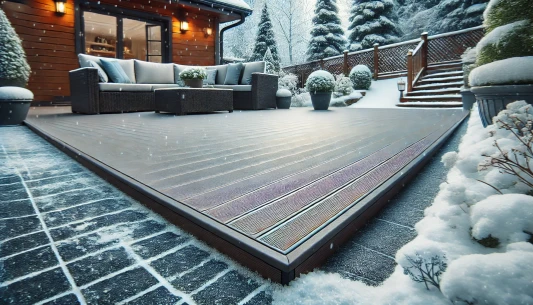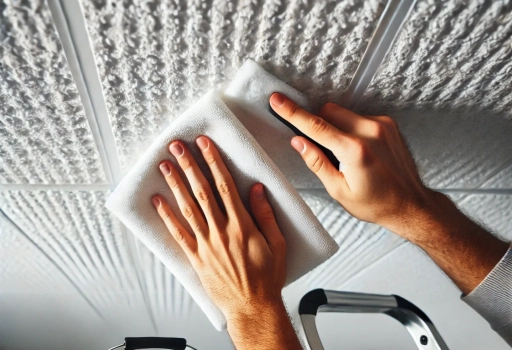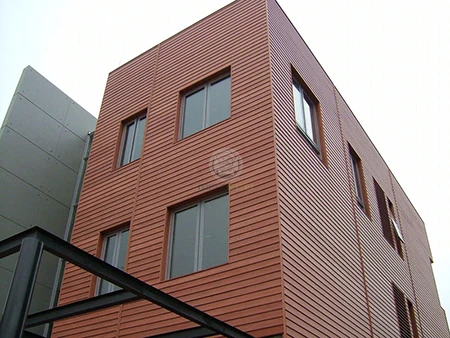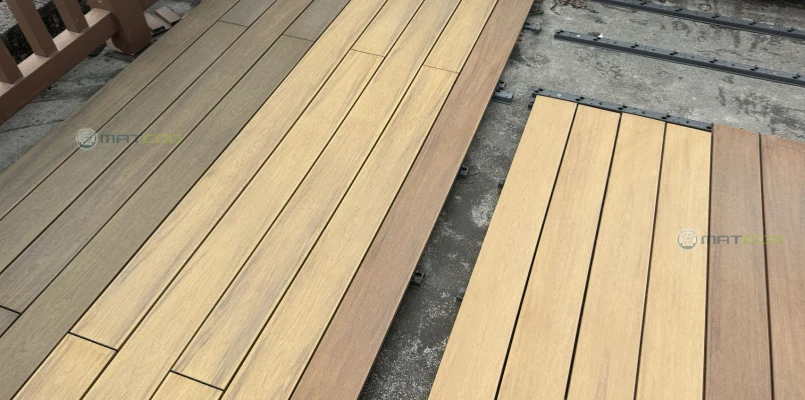Can You Put Ice Melt on Composite Decking?
Composite decking has become an increasingly popular choice for homeowners due to its durability, low maintenance, and aesthetic appeal. However, when winter hits, concerns arise about how to manage snow and ice buildup on composite decks without damaging them. One of the most common questions asked is: Can you put ice melt on composite decking?

Table of Contents
What Do You Look for When Using Ice Melt on Composite Decking
1. Simple Ways to Clear Snow From Composite Decks
Before considering ice melts, it’s important to know some basic ways to clear snow from your composite deck to prevent damage:
Use a plastic snow shovel: Avoid using metal shovels, as they can scrape or scratch the surface of your deck. Opt for plastic or rubber-tipped shovels instead, which are gentler on composite materials.
Sweep with a broom: For light snow, a broom can be more than enough to clear the surface without risk of damage.
Avoid heavy equipment: Snow blowers or other heavy machinery can be too abrasive for composite decking and may lead to cracks or wear over time.
If snow is manageable without ice buildup, physical removal may be all you need. But what happens when ice forms and clearing snow alone isn’t enough? This is where ice melt can come in handy.
2. Can You Put Ice Melt on Composite Decking?
The short answer is yes, you can use ice melt on composite decking, but with a few precautions. Not all ice melts are created equal, and certain chemicals can cause discoloration, surface damage, or other long-term issues. The key is selecting a product that is safe for your composite deck while being effective at melting ice.
Here are a few important tips to follow when choosing an ice melt for composite decking:
Use chloride-based ice melts sparingly: These are generally safe but should not be overused.
Avoid products with high salt content: Over time, heavy salt usage can lead to corrosion of metal fasteners or rails attached to the deck.
3. How Do Ice Melts Work?
Ice melts, often referred to as de-icers, work by lowering the freezing point of water. When you apply an ice melt to the surface of snow or ice, it dissolves in the thin layer of liquid water that is always present (even in very cold temperatures). This process releases heat, which further melts the ice or snow, forming a brine that disrupts the bond between the frozen layer and the surface of your deck.
Once loosened, the ice can be easily removed or it may melt completely, depending on the weather conditions and amount of ice melt applied.

4. What Chemicals Are Used in Ice Melts?
Ice melts are composed of various chemicals, each with its own set of characteristics, advantages, and disadvantages. The most common types include:
a. Sodium Chloride (Rock Salt)
Characteristics: This is the most commonly used ice melt due to its affordability and availability. It’s effective down to about 20°F (-6°C).
Advantages: Inexpensive and widely available.
Disadvantages: Can be corrosive to metal fasteners, can cause discoloration on composite decks over time, and is less effective in extremely low temperatures. It also can harm plants and pets.
b. Calcium Chloride
Characteristics: One of the fastest-acting ice melts, calcium chloride works in temperatures as low as -25°F (-32°C).
Advantages: Highly effective in low temperatures, fast-acting, and produces less residue than sodium chloride.
Disadvantages: More expensive, can cause a slippery residue, and overuse can lead to damage on decks and nearby plants.
c. Magnesium Chloride
Characteristics: A more environmentally friendly option, magnesium chloride works at temperatures down to around -13°F (-25°C).
Advantages: Less harmful to plants and pets, lower environmental impact, and generally considered safe for most surfaces, including composite decking.
Disadvantages: Can be more costly than other options and may still cause some residue buildup over time.
d. Calcium Magnesium Acetate (CMA)
Characteristics: CMA is biodegradable and primarily used as an environmentally friendly de-icer. It works best above 20°F (-6°C).
Advantages: Safe for pets, plants, and the environment, non-corrosive, and less damaging to composite decks.
Disadvantages: Not effective at very low temperatures and is generally more expensive.
5. What Do You Look for When Using Ice Melt on Composite Decking?
When using ice melt on composite decking, there are a few key factors to keep in mind to avoid damage:
a. Choose the Right Product
Always choose ice melts that are labeled as safe for composite materials. Products that contain magnesium chloride or calcium magnesium acetate (CMA) are typically the safest bets for composite decking.
b. Apply Sparingly
Even if a product is considered safe, applying it in excess can lead to unnecessary buildup, which may leave residues or cause a slippery surface. Use just enough to break the ice's bond with the deck surface.
c. Clear Debris After Use
Once the ice has melted, it’s essential to sweep off any remaining granules or brine. Leaving it on your deck for too long may lead to surface staining or create a slick, unsafe walking area.
d. Monitor Deck Fasteners
Over time, even the most composite-friendly ice melts can impact the fasteners and railings attached to your deck. Regularly inspect these areas for any signs of corrosion or wear.
6. Choosing the Best Composite Decking for Winter
When preparing your deck for winter, choosing the right composite decking is key to ensuring long-lasting performance. Our high-performance composite decking is designed to withstand freezing temperatures, resist moisture, and prevent warping or cracking, making it ideal for harsh winter conditions. With superior slip resistance and minimal maintenance requirements, our decking provides a safer, more reliable surface in wet and icy conditions. Available in a variety of colors, our decking offers options that suit both functional and aesthetic needs, ensuring your deck remains beautiful and safe throughout the winter season.
7. Conclusion
In conclusion, you can safely use ice melt on composite decking as long as you choose the right product and apply it carefully. Always follow best practices by clearing away snow before applying ice melt and cleaning up residual granules once the ice is gone.
With a little precaution, your composite deck can weather the winter season unscathed!
If you are looking for a WPC manufacturer, MATECO will be your best choice.
WhatsApp: +86-13380085620
Email: info@matecowpc.com
















